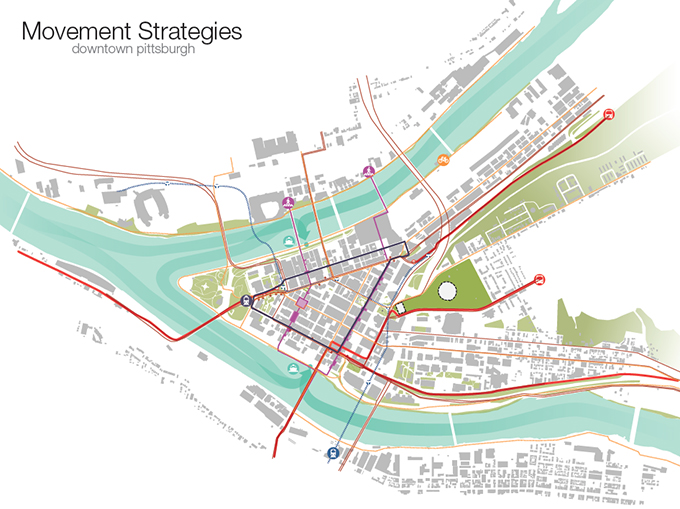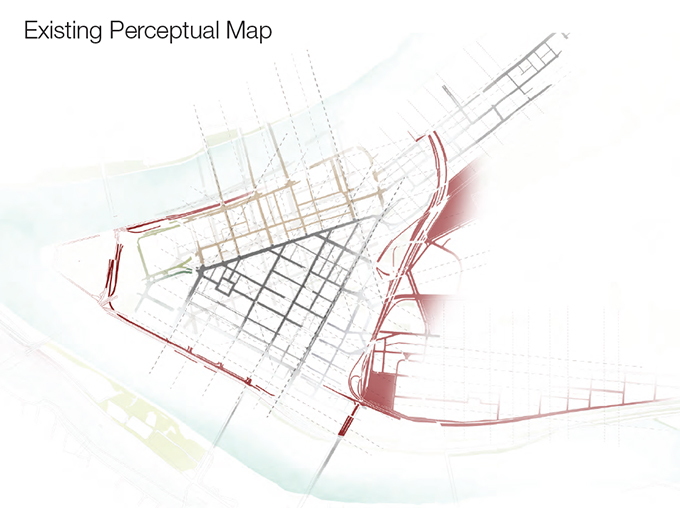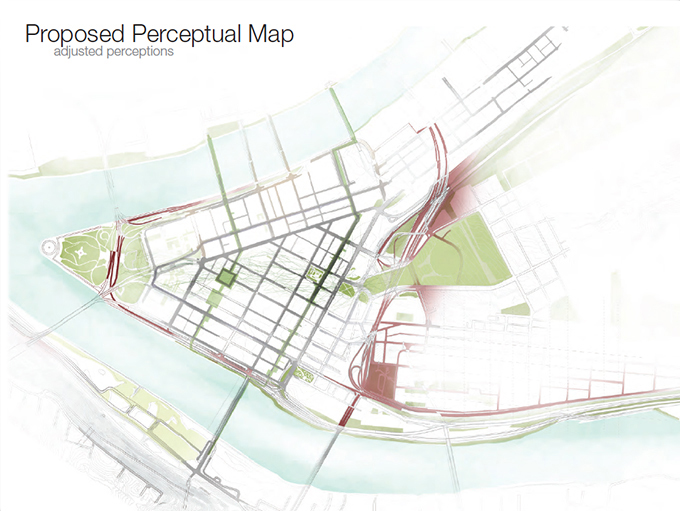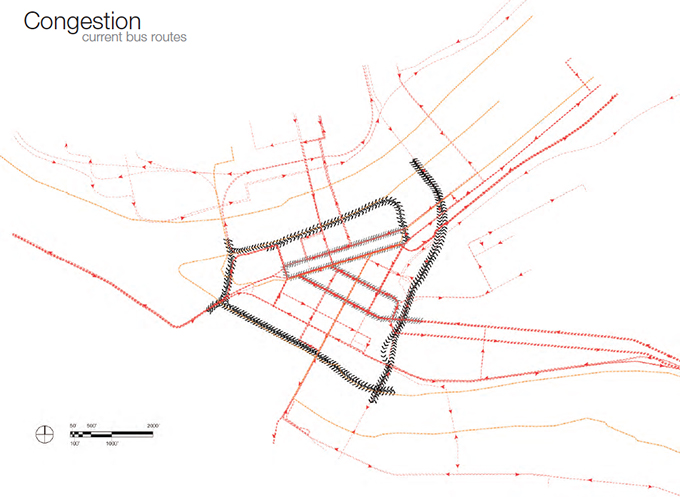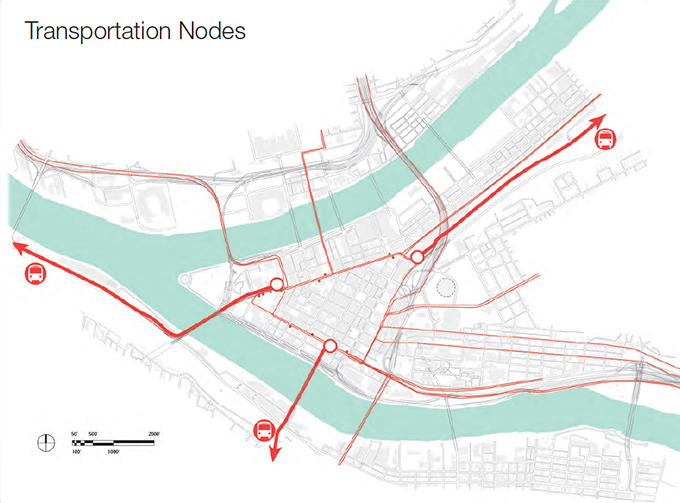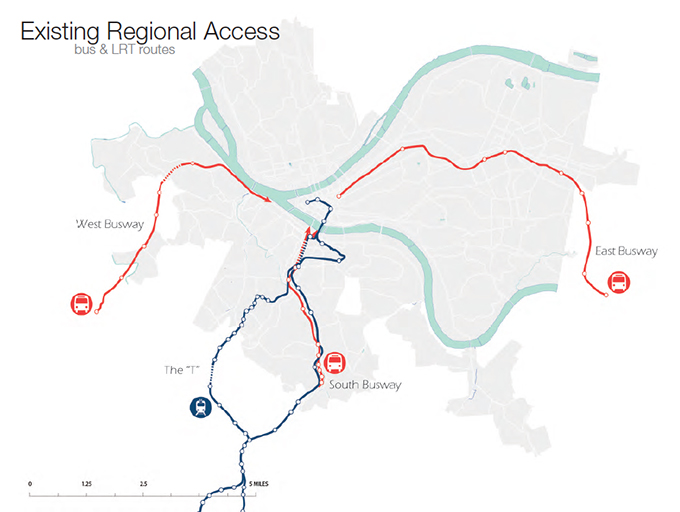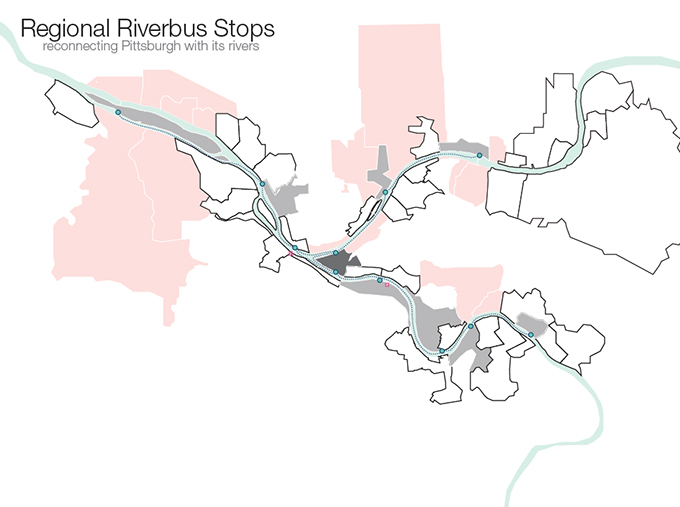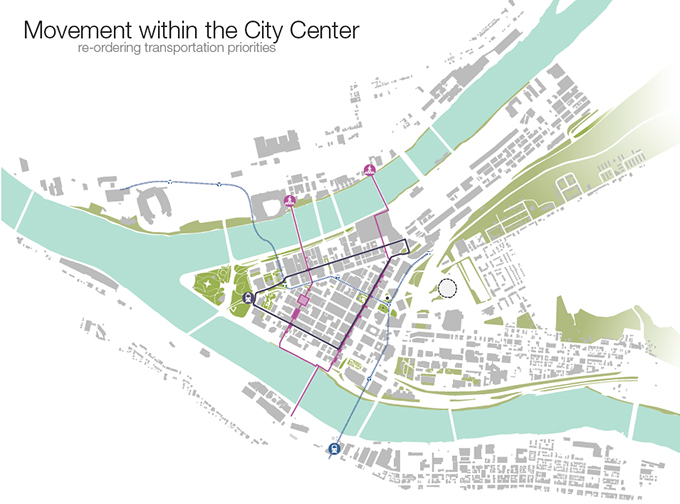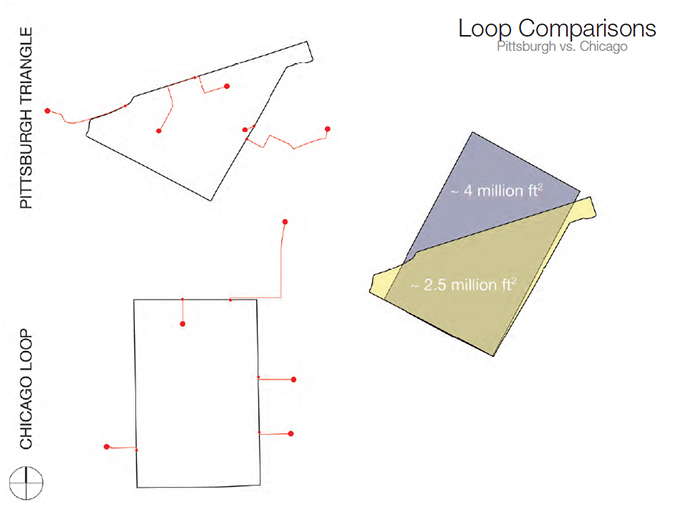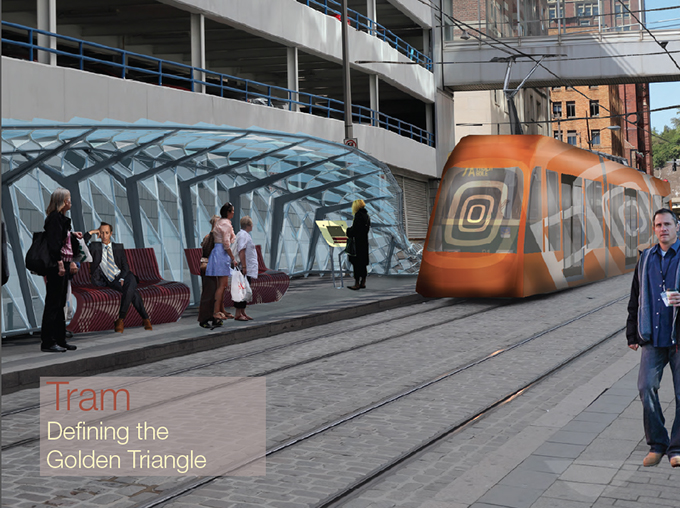Matthew Z Huber | Design Thinking
Urban Framework
Date: Fall 2010
This project was completed as part of a study done through the Urban Lab at Carnegie Mellon University, as a collective class framework for the downtown, "Golden Triangle," area of the city of Pittsburgh. After facing decades of shrinkage, suburanaization, and deindustrialization, Pittsburgh is once again facing the prospect of urban growth due to an economic rebirth in technology, finance, and health care. While much of the development is occuring as peripheral residential neighborhoods redensify, several large projects, including new highrises, are rejuvinating downtown. The current condition, however, lacks acivity outside of business hours and on weekends, primarily due to a lack of housing and inadequate foot traffic within and through the triangle. This study focused on a systemic reorganization of transportation networks to promote stronger pedestrian connections within the micro neighborhoods of downtown and to adjacent urban enclaves across and up river, as well as beyond a highway system which Robert Moses supplied, severing downtown from the hill district to the east. The strategy entails a radical multi-modality, including rapid transit on designated bus ways, a riverbus that expands transit county wide, an existing light rail, expanded bike paths, and two newly designated pedestrian ways. In order to streamline congested bus routes, we proposed consolidating all lines in and out of downtown to three nodes near the vertices of the triangle. A continuously operating tram would connect the nodes, facilitating bus transfers from one node to another, and clearing the center of the city of dense bus traffic.
